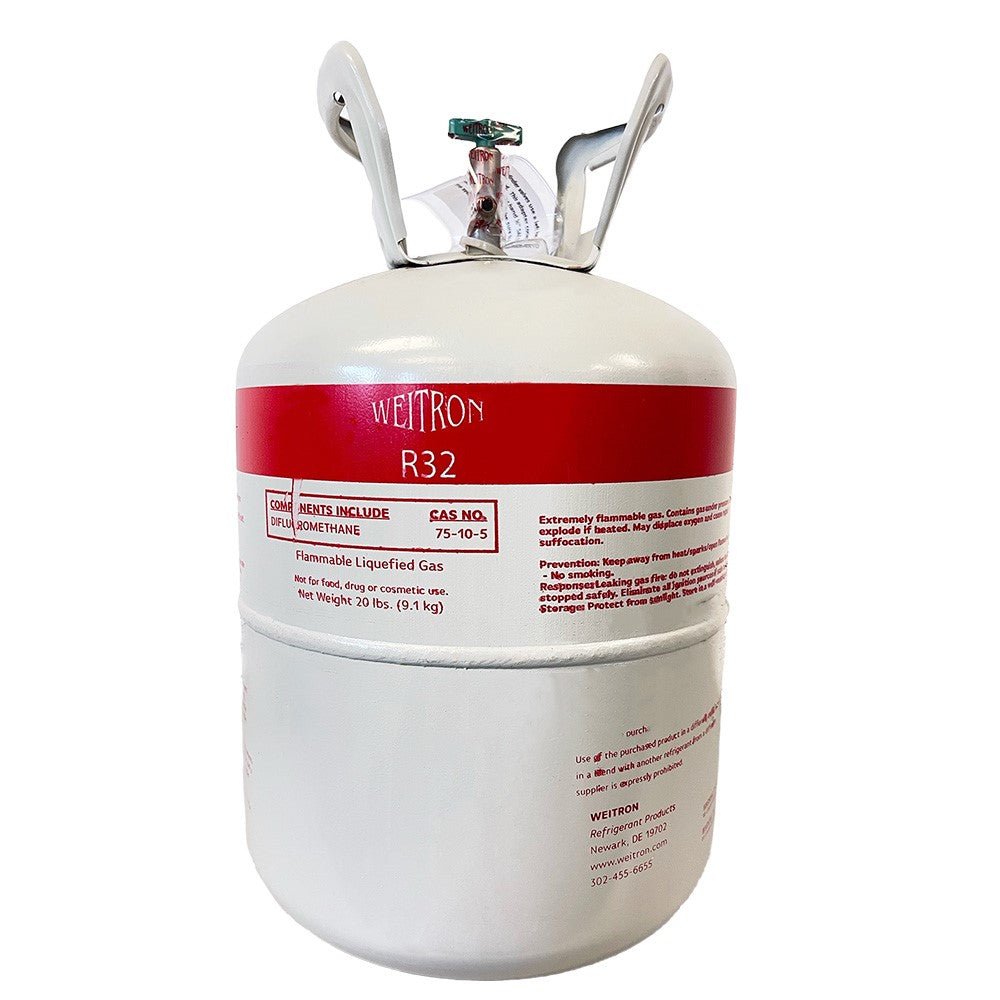The choice of refrigerant is critical in the HVAC industry, as it impacts system efficiency, environmental footprint, and operational safety. R32 and R454B are two refrigerants that have gained attention due to their lower global warming potential (GWP) compared to traditional refrigerants like R410A. In this article, we'll explore the characteristics of R32 and R454B to help you determine which is better suited for your needs.
Understanding R32
Characteristics of R32
- Chemical Composition: R32 (difluoromethane) is a hydrofluorocarbon (HFC) with a chemical formula of CH2F2.
- GWP: R32 has a GWP of 675, which is significantly lower than R410A's GWP of 2,088, making it a more environmentally friendly option.
- Efficiency: R32 is known for its high energy efficiency and excellent heat transfer properties.
- Flammability: R32 is classified as A2L, indicating mild flammability. This requires careful handling and installation to ensure safety.
Advantages of R32
- Higher Efficiency: R32 offers superior energy efficiency compared to many other refrigerants, resulting in reduced electricity consumption and lower operational costs.
- Lower GWP: With a GWP of 675, R32 is a more sustainable option, helping to reduce the environmental impact of HVAC systems.
- Widely Available: R32 is used globally and is readily available, making it a popular choice for new air conditioning systems.
Disadvantages of R32
- Flammability Concerns: The mild flammability of R32 may limit its use in certain applications or regions with stricter safety regulations.
Understanding R454B
Characteristics of R454B
- Chemical Composition: R454B is a blend of 68.9% R32 and 31.1% R1234yf, making it a hydrofluoroolefin (HFO)/HFC blend.
- GWP: R454B has a GWP of 466, which is even lower than R32, enhancing its appeal as an eco-friendly option.
- Efficiency: R454B offers good energy efficiency and can be a direct replacement for R410A in many systems.
- Flammability: R454B is also classified as A2L, indicating mild flammability similar to R32.
Advantages of R454B
- Very Low GWP: With a GWP of 466, R454B is one of the lowest-GWP alternatives available, making it highly attractive for environmentally conscious applications.
- Ease of Transition: R454B can often be used as a drop-in replacement for R410A with minimal system modifications, simplifying the transition for manufacturers and users.
- Balanced Performance: R454B provides a good balance of efficiency, performance, and environmental benefits.
Disadvantages of R454B
- Limited Availability: As a newer refrigerant, R454B may not be as widely available as R32, which could impact supply and pricing.
- Flammability: Like R32, R454B's mild flammability requires adherence to safety guidelines during installation and operation.
Which Refrigerant is Better?
The choice between R32 and R454B depends on several factors, including your specific application, environmental goals, and regulatory requirements. Here are some considerations to help you decide:
-
Environmental Impact: If minimizing the environmental impact is a top priority, R454B's lower GWP gives it an edge over R32.
-
Efficiency Needs: Both R32 and R454B offer excellent energy efficiency, but R32 is widely recognized for its high performance, making it a strong candidate for applications where efficiency is crucial.
-
Availability and Cost: R32 is more widely available and may be more cost-effective due to its established presence in the market. R454B, being newer, might have higher costs and limited availability in some regions.
-
Safety and Regulations: Both refrigerants have mild flammability and require careful handling. It's important to consult local regulations and standards to ensure compliance.
Conclusion
Both R32 and R454B offer significant advantages over traditional refrigerants, particularly in terms of environmental impact and efficiency. R32 is a proven choice for those seeking high efficiency and wide availability, while R454B provides an even lower GWP and ease of transition from R410A. Ultimately, the decision will depend on your specific needs and priorities, as well as the regulatory landscape in your area.


